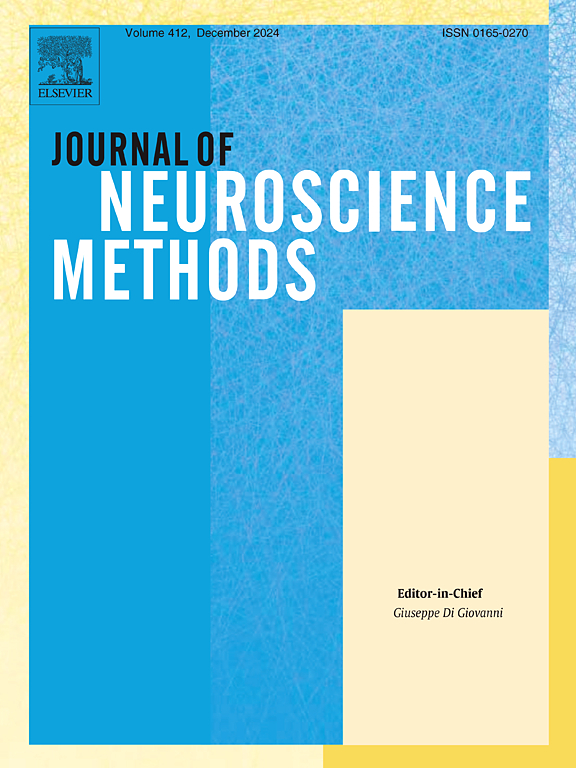CSCE: Cross Supervising and Confidence Enhancement pseudo-labels for semi-supervised subcortical brain structure segmentation
IF 2.7
4区 医学
Q2 BIOCHEMICAL RESEARCH METHODS
引用次数: 0
Abstract
Robust and accurate segmentation of subcortical structures in brain MR images lays the foundation for observation, analysis and treatment planning of various brain diseases. Deep learning techniques based on Deep Neural Networks (DNNs) have achieved remarkable results in medical image segmentation by using abundant labeled data. However, due to the time-consuming and expensive of acquiring high quality annotations of brain subcortical structures, semi-supervised algorithms become practical in application. In this paper, we propose a novel framework for semi-supervised subcortical brain structure segmentation, based on pseudo-labels Cross Supervising and Confidence Enhancement (CSCE). Our framework comprises dual student-teacher models, specifically a U-Net and a TransUNet. For unlabeled data training, the TransUNet teacher generates pseudo-labels to supervise the U-Net student, while the U-Net teacher generates pseudo-labels to supervise the TransUNet student. This mutual supervision between the two models promotes and enhances their performance synergistically. We have designed two mechanisms to enhance the confidence of pseudo-labels to improve the reliability of cross-supervision: a) Using information entropy to describe uncertainty quantitatively; b) Design an auxiliary detection task to perform uncertainty detection on the pseudo-labels output by the teacher model, and then screened out reliable pseudo-labels for cross-supervision. Finally, we construct an end-to-end deep brain structure segmentation network only using one teacher network (U-Net or TransUNet) for inference, the segmentation results are significantly improved without increasing the parameters amount and segmentation time compared with supervised U-Net or TransUNet based segmentation algorithms. Comprehensive experiments are performed on two public benchmark brain MRI datasets. The proposed method achieves the best Dice scores and MHD values on both datasets compared to several recent state-of-the-art semi-supervised segmentation methods.
半监督皮质下脑结构分割的交叉监督和置信度增强伪标签
脑MR图像中皮质下结构的鲁棒性和准确性分割为各种脑疾病的观察、分析和治疗计划奠定了基础。基于深度神经网络(Deep Neural Networks, dnn)的深度学习技术利用丰富的标记数据在医学图像分割中取得了显著的效果。然而,由于获取高质量的大脑皮层下结构注释的时间长、成本高,半监督算法在实际应用中具有一定的实用性。本文提出了一种基于伪标签交叉监督和置信度增强(欧安会)的半监督皮质下脑结构分割新框架。我们的框架包括双学生-教师模型,特别是U-Net和TransUNet。对于无标签数据训练,TransUNet老师生成伪标签来监督U-Net学生,U-Net老师生成伪标签来监督TransUNet学生。这种两种模式之间的相互监督,协同促进和提高了它们的绩效。我们设计了两种机制来增强伪标签的置信度,以提高交叉监督的可靠性:a)利用信息熵定量描述不确定性;b)设计一个辅助检测任务,对教师模型输出的伪标签进行不确定性检测,筛选出可靠的伪标签进行交叉监督。最后,我们构建了一个仅使用一个教师网络(U-Net或TransUNet)进行推理的端到端脑深部结构分割网络,与基于监督U-Net或TransUNet的分割算法相比,在不增加参数数量和分割时间的情况下,分割结果得到了显著改善。在两个公开的脑MRI基准数据集上进行了综合实验。与最近几种最先进的半监督分割方法相比,所提出的方法在两个数据集上都获得了最好的Dice分数和MHD值。
本文章由计算机程序翻译,如有差异,请以英文原文为准。
求助全文
约1分钟内获得全文
求助全文
来源期刊

Journal of Neuroscience Methods
医学-神经科学
CiteScore
7.10
自引率
3.30%
发文量
226
审稿时长
52 days
期刊介绍:
The Journal of Neuroscience Methods publishes papers that describe new methods that are specifically for neuroscience research conducted in invertebrates, vertebrates or in man. Major methodological improvements or important refinements of established neuroscience methods are also considered for publication. The Journal''s Scope includes all aspects of contemporary neuroscience research, including anatomical, behavioural, biochemical, cellular, computational, molecular, invasive and non-invasive imaging, optogenetic, and physiological research investigations.
 求助内容:
求助内容: 应助结果提醒方式:
应助结果提醒方式:


